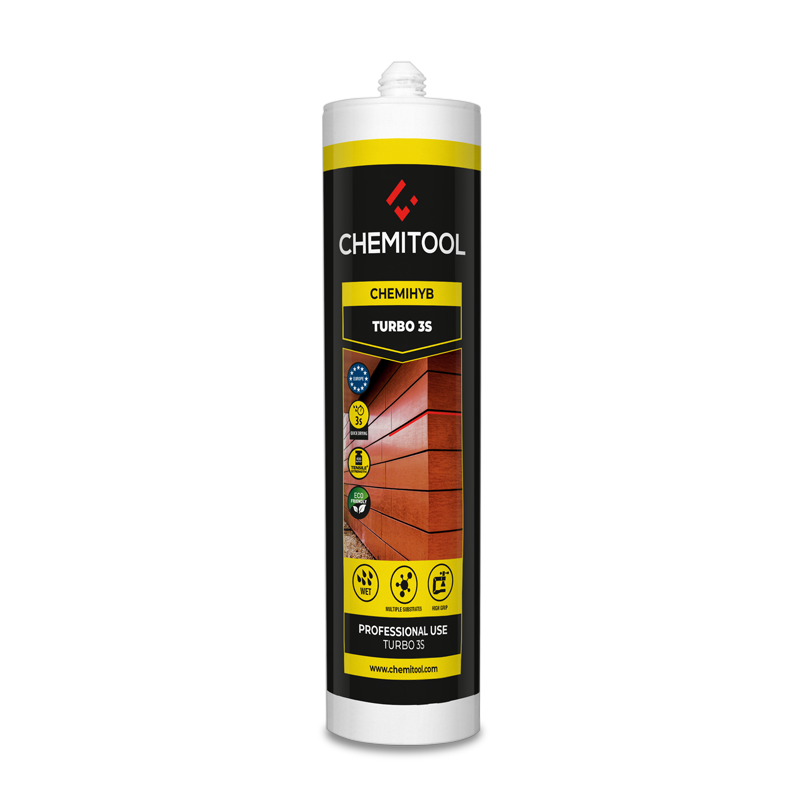Description
ADVANTAGES
- Resistance to temperature – 40°C to + 90°C
- Aging, climate, and U.V. rays resistance
- Excellent adhesion on wet surfaces
- Little smell, does not shrink or turn yellow
- For indoor and outdoor use
- High initial adhesion and permanent elasticity
- It is paintable
- Solvent-free and isocyanate free
INDICATIONS
Resistant to water, aliphatic solvents, diluted inorganic acids and alkalis, oils, and fats.
Weak resistance to aromatic solvents concentrated acids and chlorinated hydrocarbons.
It is liable to paint after the formation of the product film. 10 minutes after the application is the moment when the paint adheres better to the adhesive film.
It is recommended to apply a thick enough coat of paint to cover the adhesive, to make it level.
It can be painted wet or dry, with water-based paints.
It can be used near paint booths, as it does not contaminate them.
Once it has hardened, the product can be sanded, painted, and/or varnished.
Application
APPLICATIONS
Glue of galvanized sheets, ferrous or non-ferrous metals, caravan, or truck elements. Glue of panels, roof tiles, plates, tiles, mirrors, frames, applications, fixing objects. Sealing of glass, pipes, roofs, tiles, PVC frames.
Excellent adhesion in concrete, bricks, wood, masonry, natural or artificial stone, ceramics, glass, metals such as aluminium, iron, zinc, galvanized, most thermoplastics (except polyethylene or Teflon), or thermosetting.
INSTRUCTIONS
The surfaces to be applied must be completely clean. Can be used on wet surfaces.
For sealing:
1º – Apply with a gun, pneumatic or manual, forming a continuous cord and avoiding forming air pockets.
2º – Then, smooth with a spatula moistened in soapy water.
Joint dimension: The joint must be designed according to the movement capacity of the sealant. In general, the joint should be 5-25 mm thick. The ratio between width and depth will depend on the width of the joint. In general, for joints larger than 10 mm, the ratio between width and depth should be approximately 2:1, respectively. For smaller joints, the ratio should be approximately 1:1.
| Width (mm) | Depth (mm) | Yield (m) |
|---|
| 10 | 8 | 3,75 |
| 15 | 8 | 2,5 |
| 20 | 10 | 1,5 |
| 25 | 12 | 1 |
For bonding:
1º – Apply on one of the joined surfaces, forming ropes according to the dimensions of the pieces.
2º – Press firmly on the other surface for several seconds.




